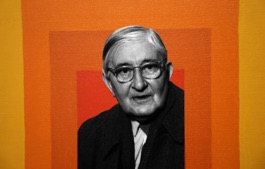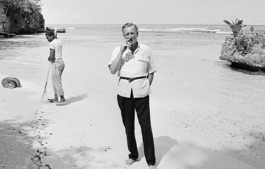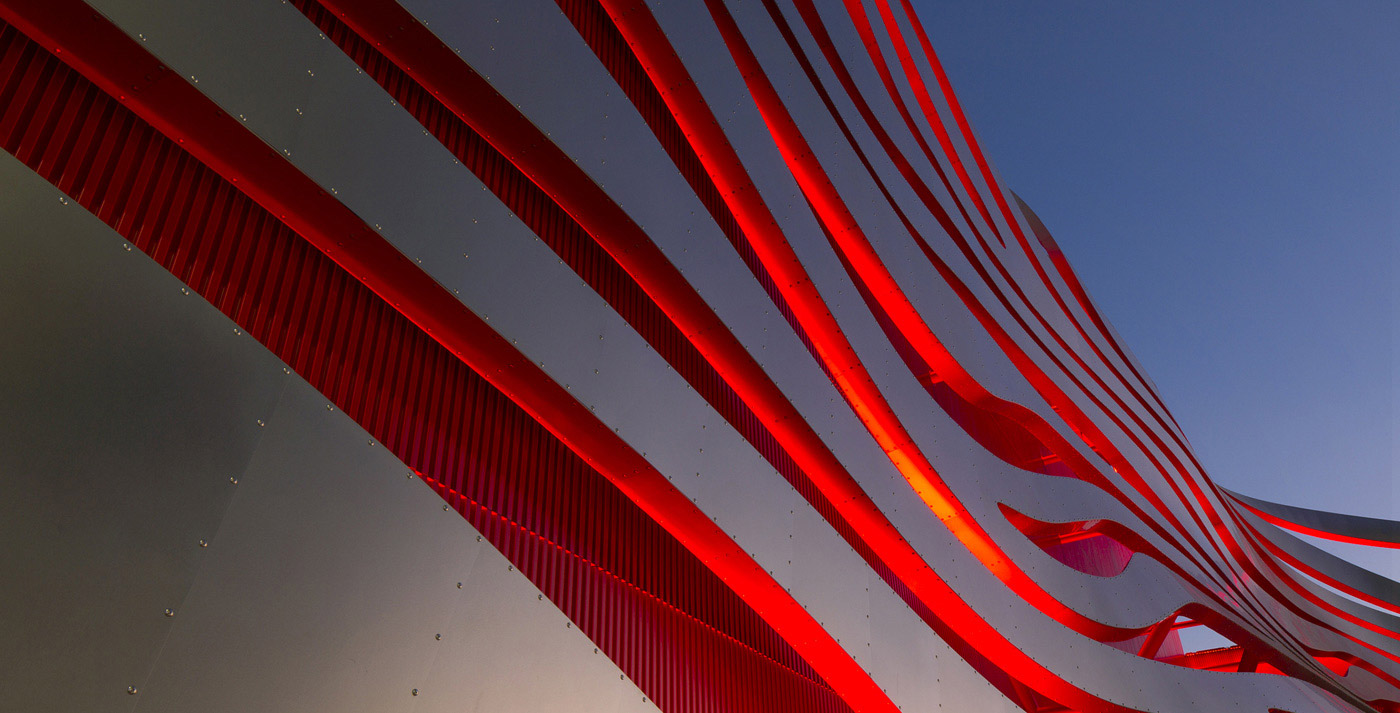
From Manhattan’s majestic Whitney to the vibrant Broad in downtown Los Angeles, art museums across the country are moving into new homes worthy of the collections they hold. Now you can add LA’s Petersen Automotive Museum to the list. When the institution decided it was time to revamp its space, it already had one of the most lust-worthy (and valuable) car collections of any nonprofit museum in the world, with Hollywood legend Steve McQueen’s 1956 Jaguar XKSS and sculptural classics like the 1936 Bugatti Type 57SC Atlantic Coupe, on loan from the Mullin Automotive Museum (Ralph Lauren owns the only other model, the 1938), not to mention BMWs painted by greats like Alexander Calder and David Hockney. The inventory was impeccable—the trick was giving the exterior some added curb appeal.
That’s where New York–based architecture firm Kohn Pedersen Fox stepped in. They toured car meccas like Munich’s BMW Museum and Museo Ferrari, in Maranello, Italy; took in the stable of gems at the Petersen itself; and then began an 18-month, $90 million overhaul. This past December, the museum reopened with a new look that injects some much-needed energy to LA’s Museum Row. The façade features undulating, stainless steel ribbons inspired by the collection inside—like a 1950s car grille by way of Dalí and an eight-lane expressway seen at light speed. The ribbons are backed with aluminum that’s been painted racing red—but can appear to glow any color thanks to a high-tech LED illumination system. All to help animate the original building within: a modest midcentury marvel designed by Welton Becket, the man behind the Capitol Records Building and the Beverly Hilton hotel.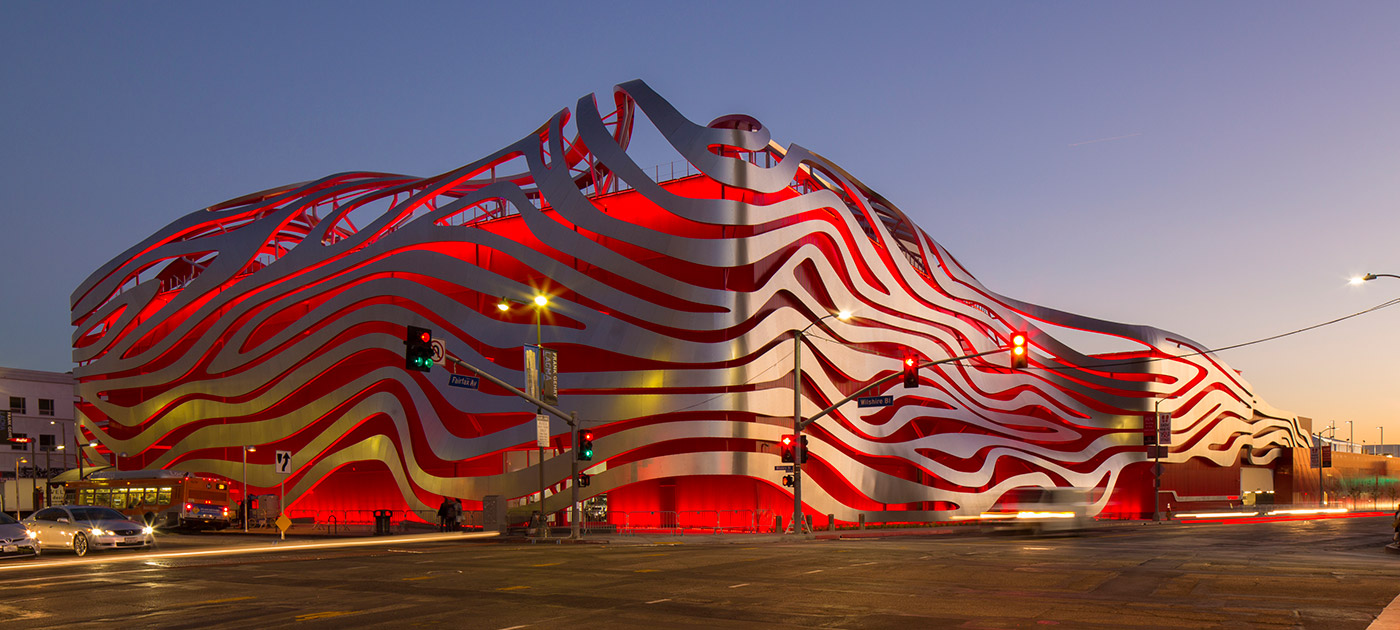
“The idea was that if we could wrap the building in ribbons and give the ribbons form, shape, and movement, that it could represent the idea of motion and speed,” says Kohn Pedersen Fox founding partner Eugene Kohn, who developed the concept with his firm’s design principal Trent Tesch. “It’s one of the few museums where you can put something on the exterior that really expresses the interior. You’re never going to put a painting on the exterior of a fine-art museum.”
It’s an eye-catching approach that’s garnered plenty of interest. International style bibles such as Architectural Digest and Wallpaper* have both praised the renovation, and location scouts and Instagrammers alike have made it a coveted spot for editorial and amateur photo shoots. While there are some detractors (one dubbed it “the Edsel of architecture”), Kohn is unapologetic in his approach. “It really fits the spirit of LA—the lights, the color, the motion,” he says. “Wilshire is a car street. As you move by this building in a car, you see it differently.”
But the real measure of success is whether that design draws patrons inside—once you’re there, the exterior fades away into a sea of beautiful machinery. Founded in 1994 by Robert E. Petersen, the publishing savant behind the launches of Hot Rod and Motor Trend, the museum’s collection has grown significantly in the past two decades. “Petersen started buying some cars, some great and some shit, depending on who he was talking to that day,” said museum board member Bruce Meyer, as we toured past the Petersen’s 1925 “Round Door” Rolls-Royce Phantom in the redesigned lobby. “But some of the prettiest cars we have here were his. He just loved the action.”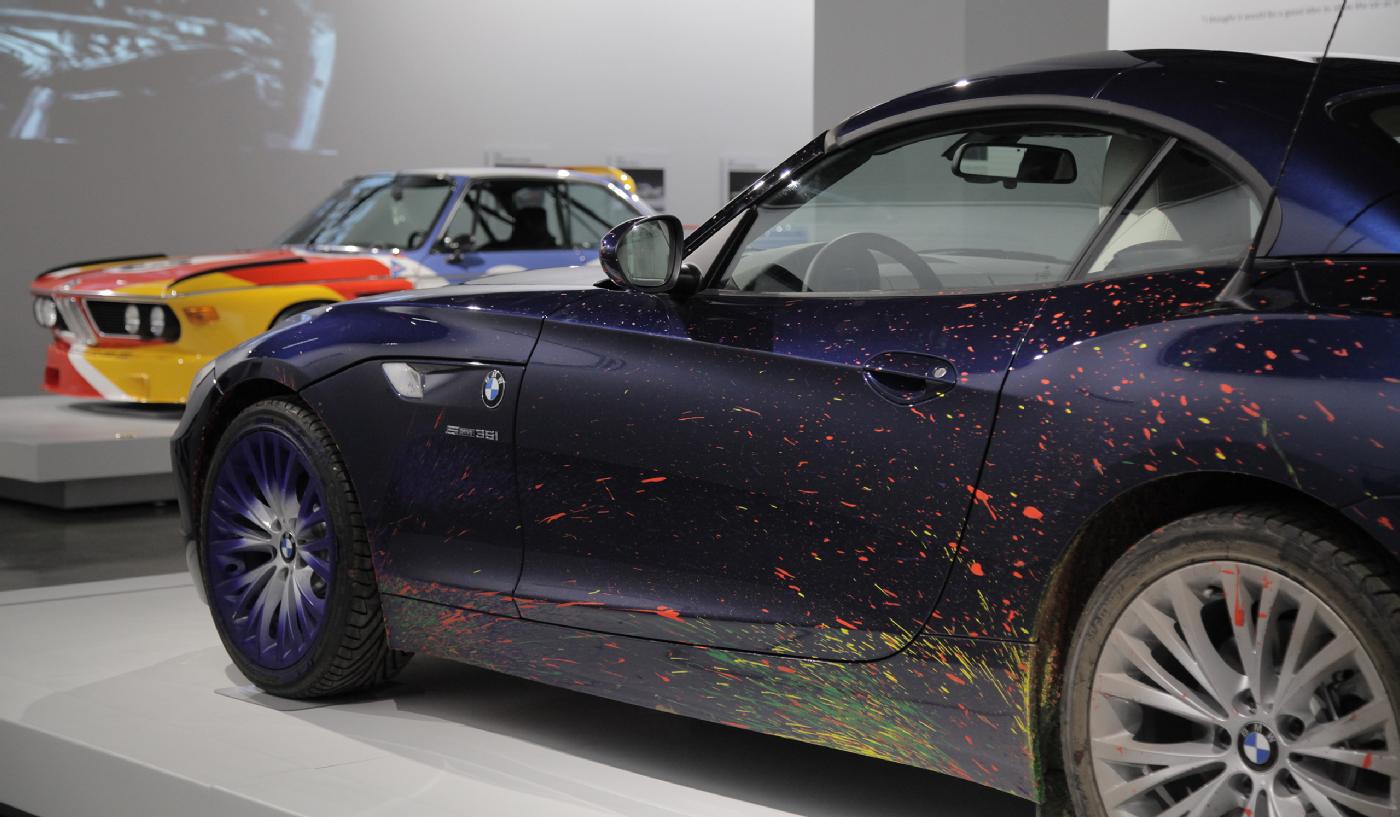
Today, the action is meticulously curated: Each of three expanded, higher-ceilinged exhibition floors has its own theme. Start at the top with the third floor (theme: history), where the Hollywood gallery highlights icons like Elvis’ bullet-riddled 1971 De Tomaso Pantera (he shot it when it refused to start), the supercharged 1989 Batmobile, and Roscoe “Fatty” Arbuckle’s 1914 Renault Type EF. On the industry-themed second floor, there’s a room devoted to racing filled with famous Porsches, a row of immersive Forza Motorsport for Xbox driving simulators, and an elegant exhibition on the rarest silver automobiles in history—from a 1937 Horch 857 Sport Cabriolet to a 1957 Ferrari 625/250 Testa Rossa on loan from Meyer’s own collection. The first floor is devoted to artistry, currently represented by auto illustration, two BMW art cars, and a magnificent Rolling Sculpture exhibition featuring, among other makes, some of the finest Bugattis ever produced.
With more than 120 cars on display and 136 more hidden away in the vault, ready to take their space on the museum’s floor, visitors to the Petersen can expect fresh exhibits by their next trip. And while the stock may change, the updated museum is set to become a Los Angeles landmark—just look for the steel ribbons racing down Miracle Mile.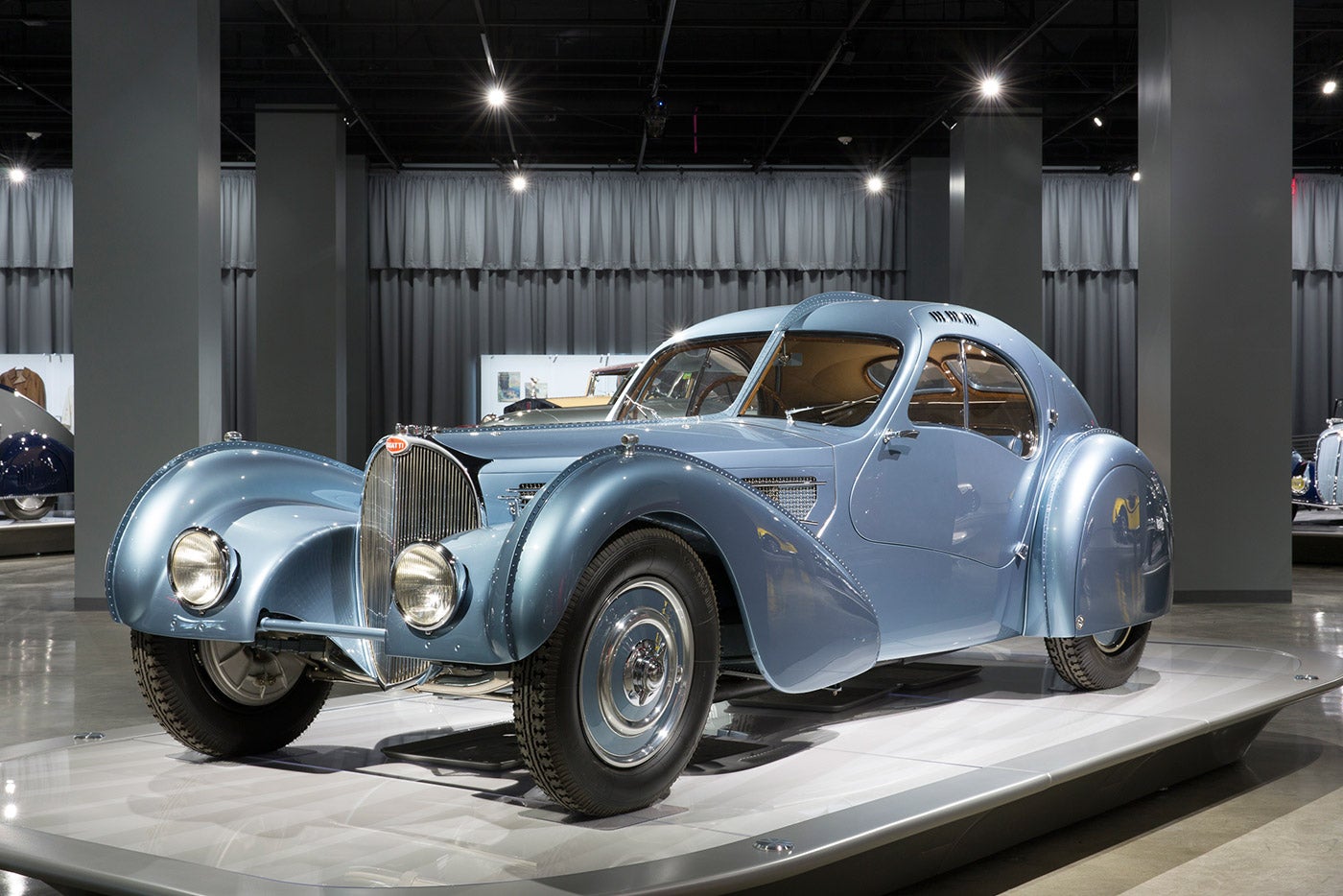
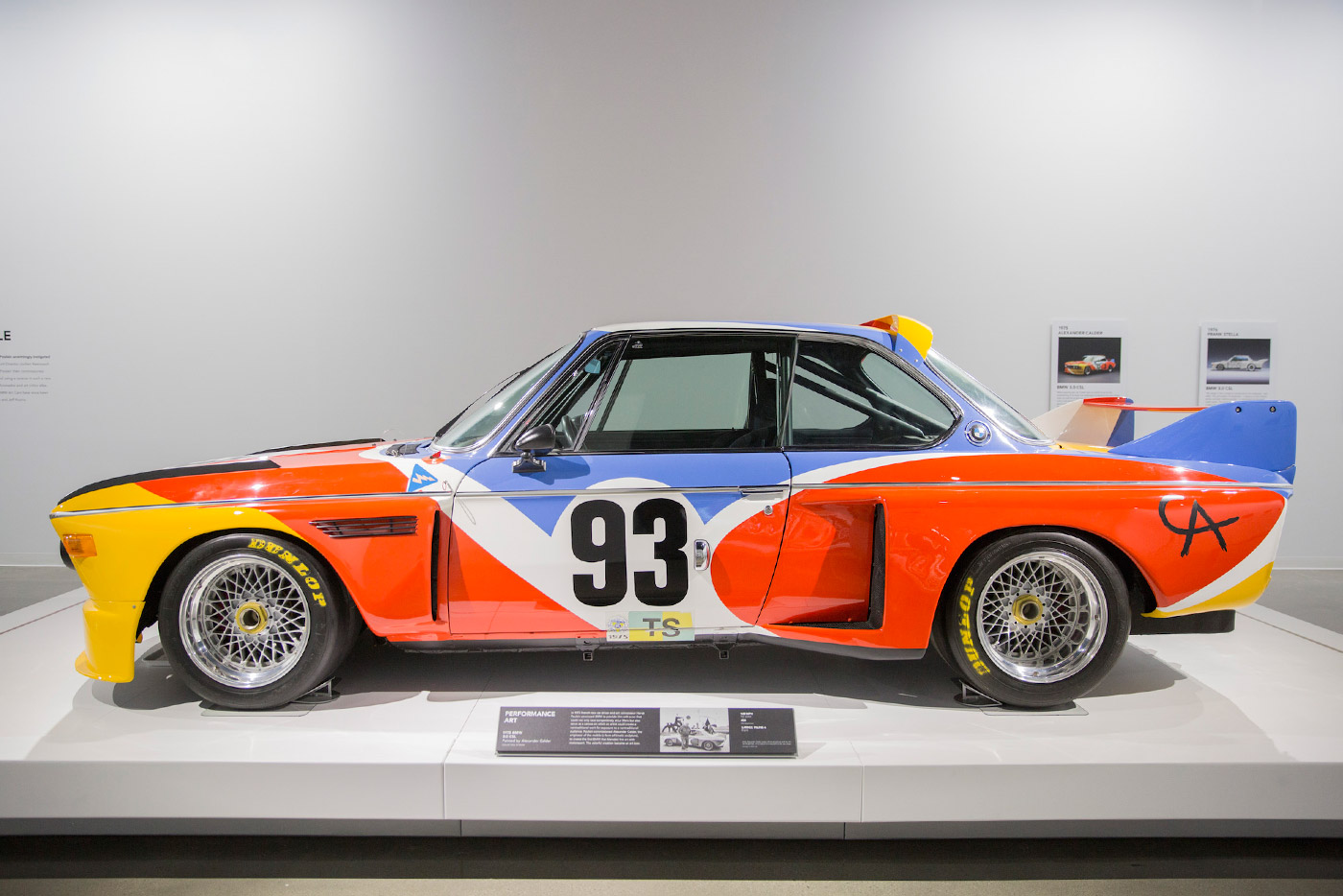
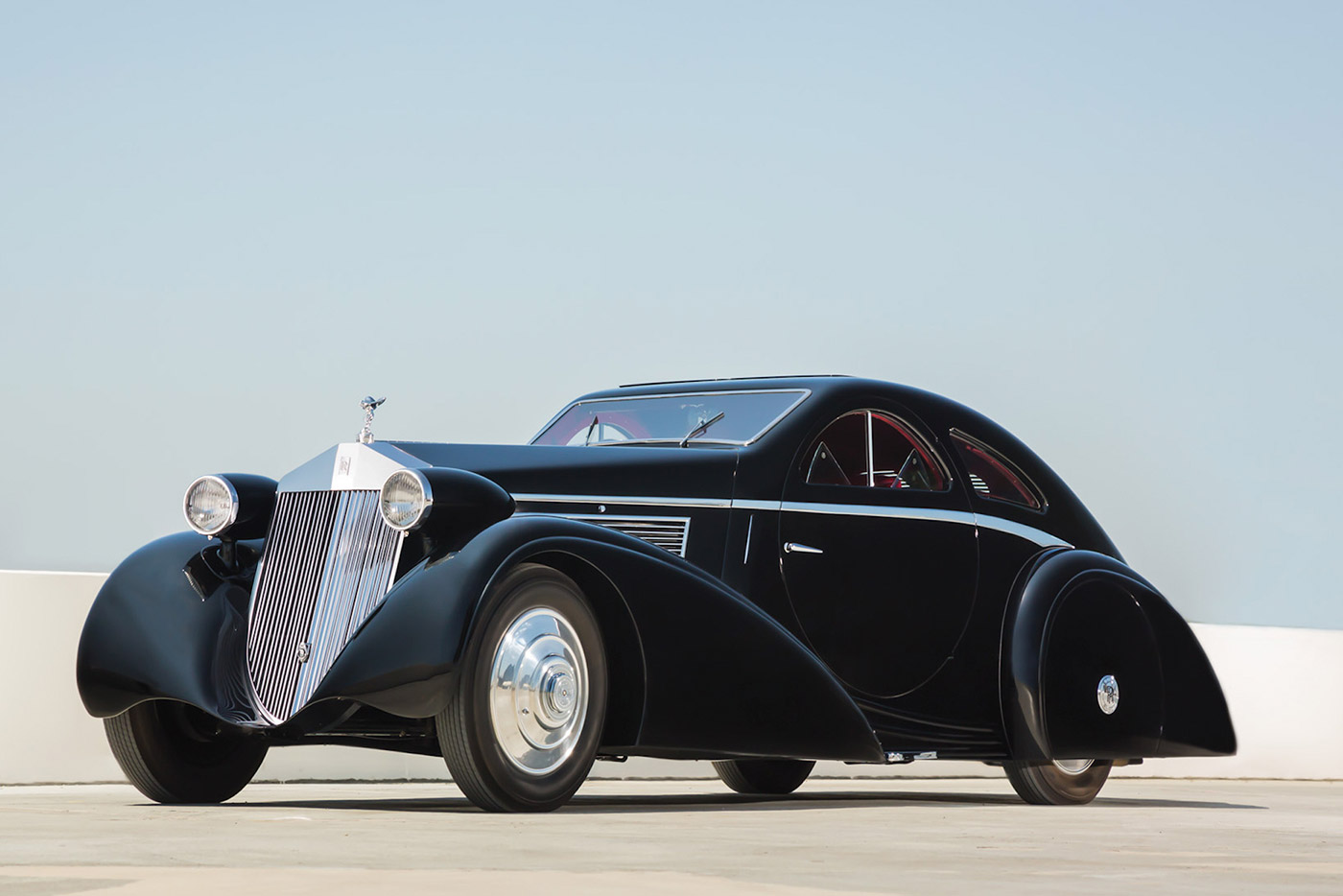
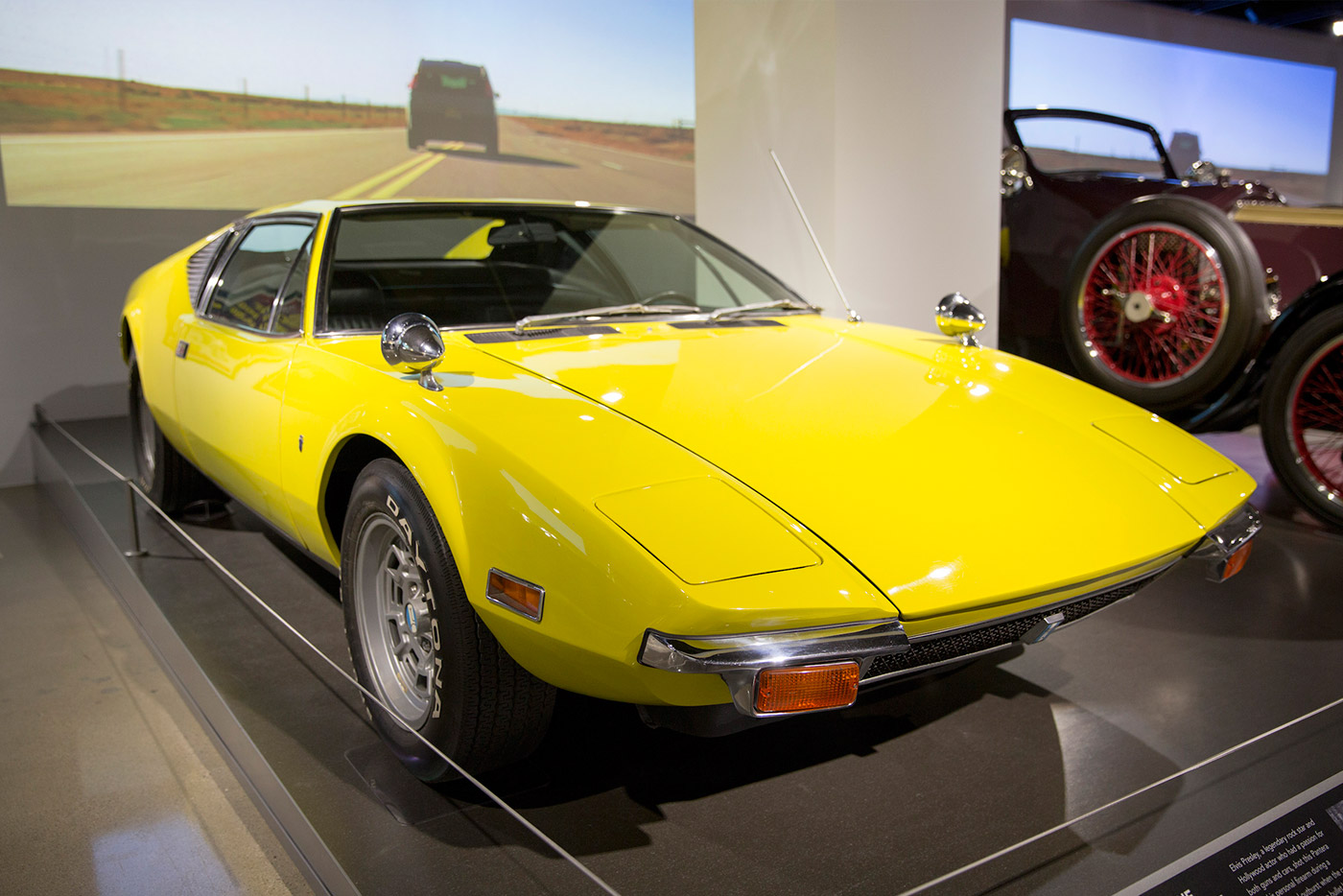
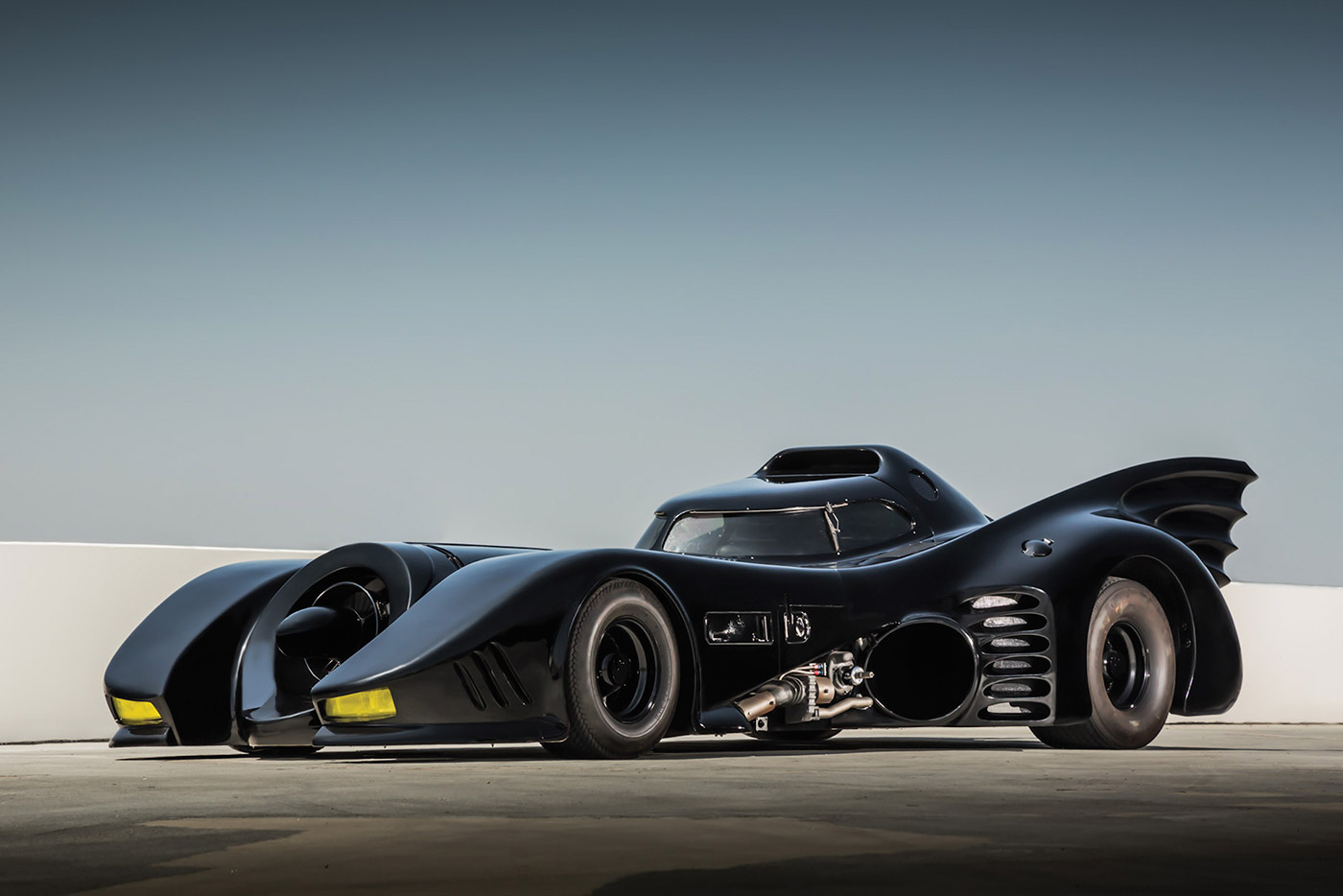
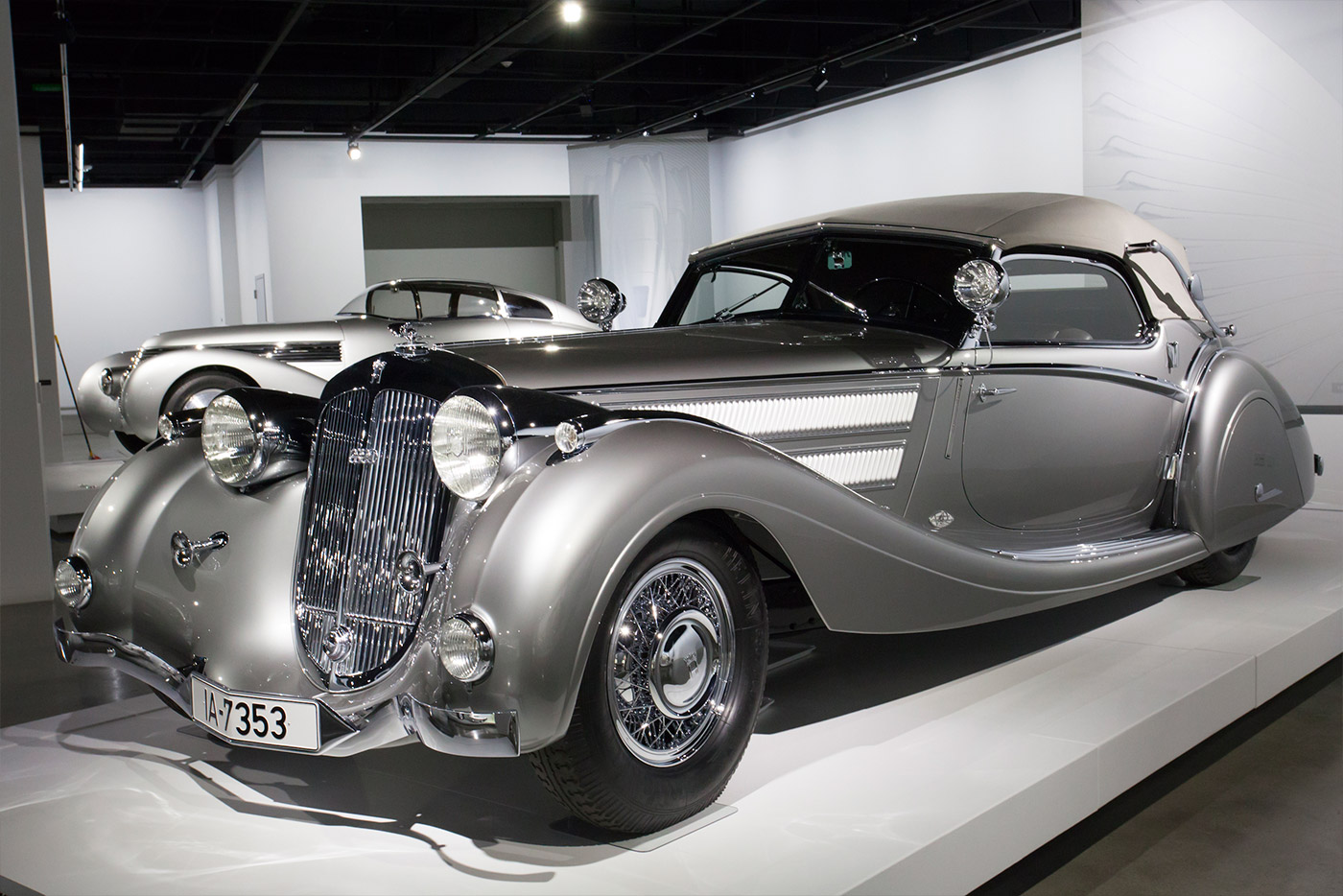
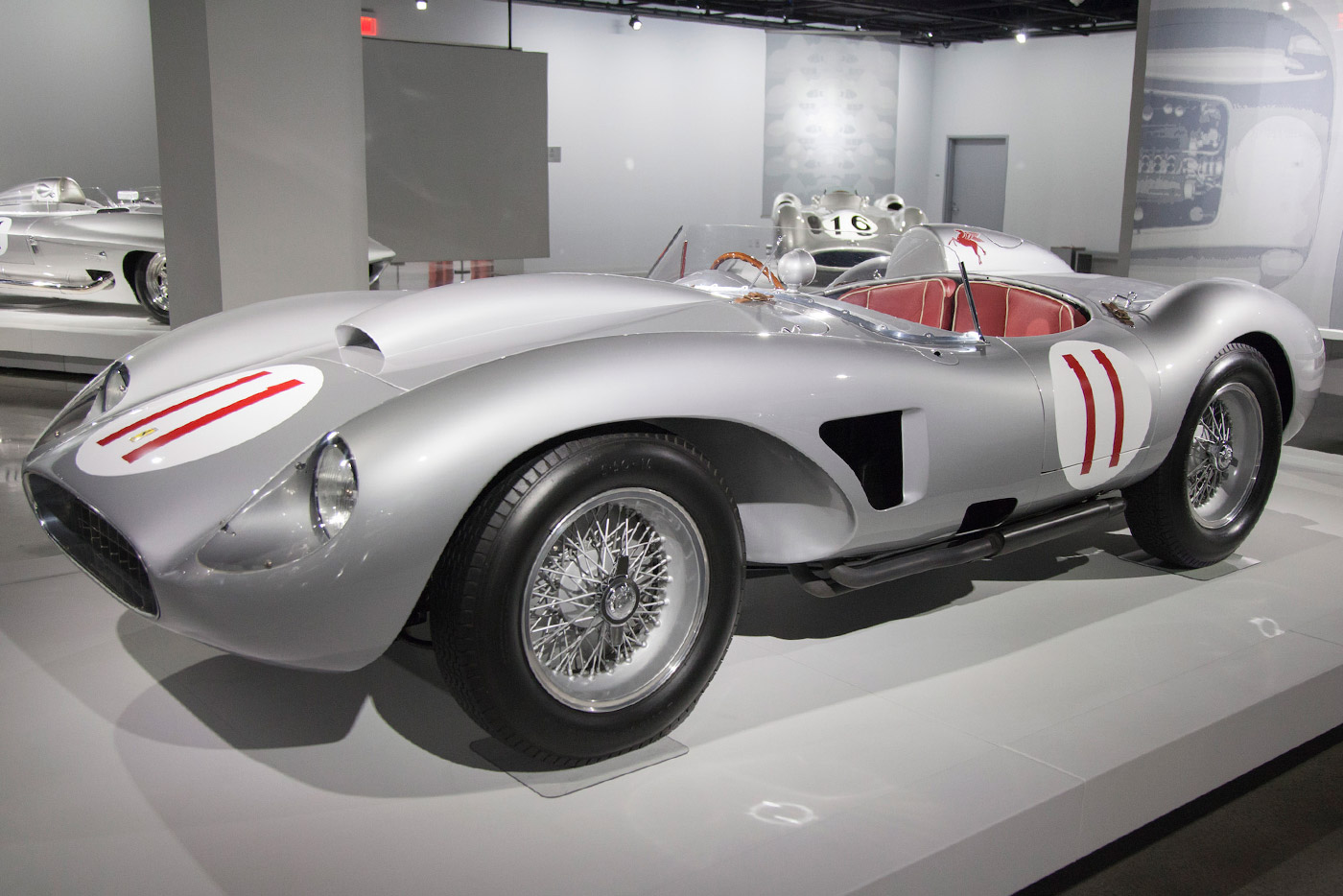
- © David Zaitz Photography
- All photos courtesy of the Petersen Automotive Museum




